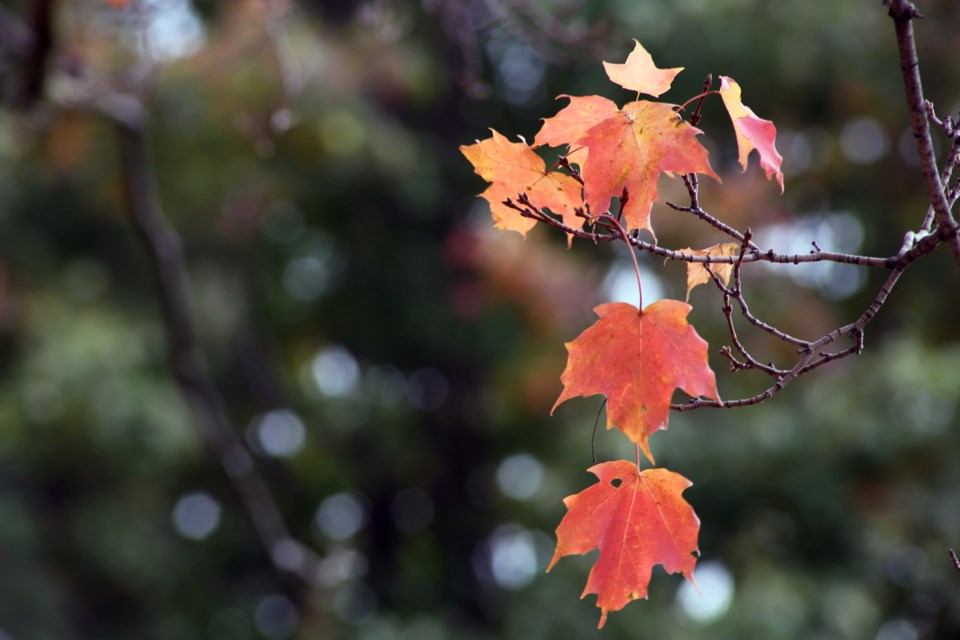Environment Canada is forecasting favourable viewing conditions for this year’s fall colour viewing, with slightly warmer-than-normal temperatures, but don't delay going to see them once they hit their peak.
Fall weather changes at a more rapid pace than summer, says David Phillips, a senior climatologist with Environment and Climate Change Canada.
“We don’t have long bouts of the same weather day after day, week after week. You typically wake up on a Monday in the middle of July or August and you can plan your golf game on Thursday, but you can’t do that in the fall,” said Phillips.
Once they are at their peak, the leaves can continue changing from vibrant colour to browns very quickly. At that point they are also more susceptible to wind events that can make them hit the ground sooner than expected.
“You book off sick or play hooky or whatever — you have to move with the weather. You don’t assume today’s weather is going to hold for the next four days because that doesn’t happen often in the fall,” said Phillips.
He said the fall colours begin about the same time every year, dispelling the notion that fall colours are early or late.
“There may be a one or two-day difference,” said Phillips of the date when leaves begin to change colour versus in the previous year.
The actual change is brought about by the amount of sunlight each tree receives, said Phillips.
“It is very much determined by day length.,” he said.
As the chlorophyl level in the leaves begins to fade their true colours begin to emerge.
“It doesn’t matter really what the weather is, you are going to have some leaves starting to change at approximately the same time every year. Some people claim it doesn’t, but it does,” said Phillips.
What the weather does impact is when the peak viewing season arrives. That date can change much more from year to year, depending on fall conditions, as well as the summer that lead into it.
“If we look at this year, we had a good summer in Sault Ste. Marie and central Ontario,” said Phillips. ”From a temperature point of view it was the summer of summers. It was comfortable, it didn’t disappoint people, generally.
Phillips said there were six days this summer in which the temperature was above 30 degrees Celsius, up from the usual average of four or five.
“They weren’t excessive, though. They weren’t as if they were 35 or 36 (degrees Celsius), they were 30 or 31,” he said. “Overall the summer was warmer than normal, but not excessively so. There were enough coolish days that made people appreciate the weather when it did come back.”
Phillips said the slightly warmer and wetter weather experienced this year in Sault Ste. Marie and area usually means healthy conditions for agriculture and trees, which could be a good thing for colour watchers.
“The trees have not been stressed, generally, across the province. There is the promise of a good viewing colour change season,” he said.
Phillips said the forecast for the next month or so should be favourable for colour watching, with most daytime temperatures expected to be in the mid 20s. Some rain might dampen spirits for colour watchers, depending on the day.
“We think it’s going to be warmer than normal. Precipitation is looking favourable, but a little wetter than normal in northern Ontario,” he said.
Phillips said fall ‘sweater weather’ is his favourite time of year, something he shares with a great many people he knows.
“I don’t think there’s anybody who doesn’t like the fall. It may not be your favourite season, but certainly there is nothing in it that is particularly perilous or stressful or what have you,” he said. “It’s a time when we can stop complaining about the heat and humidity and worrying about the cold and the ice and the snow and we can think about it as the time of the year that we really show ourselves.”
